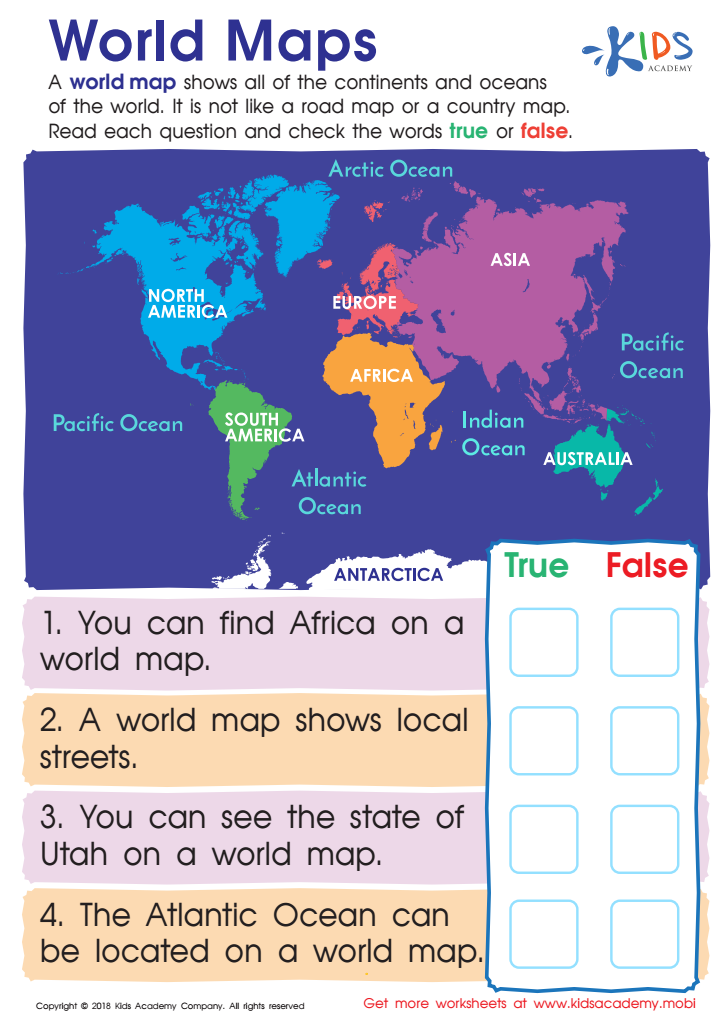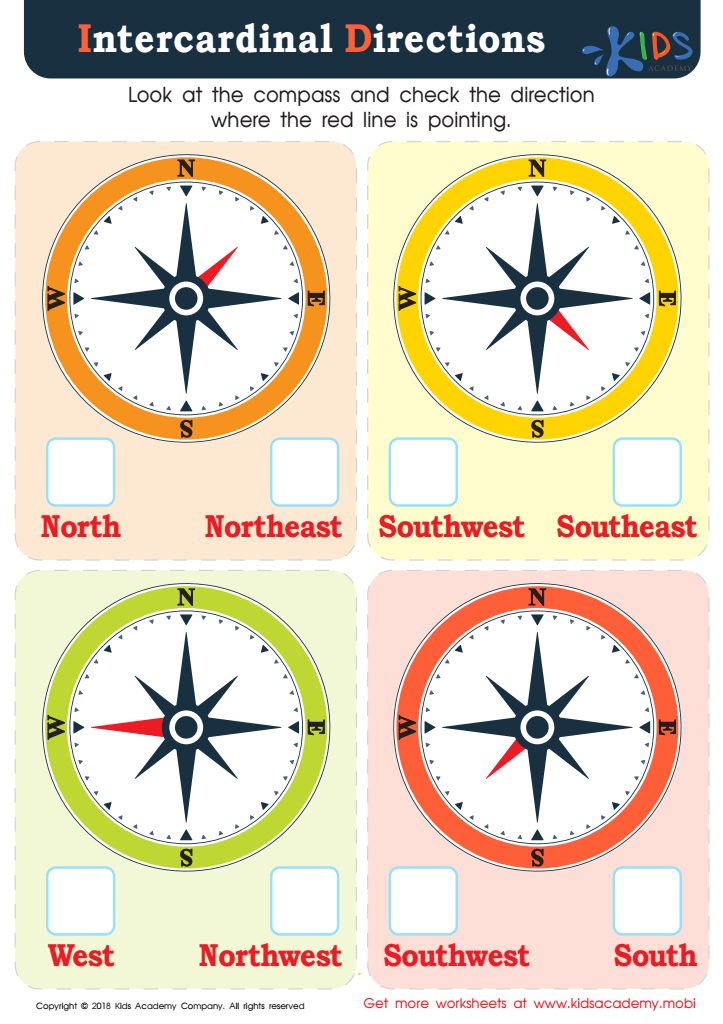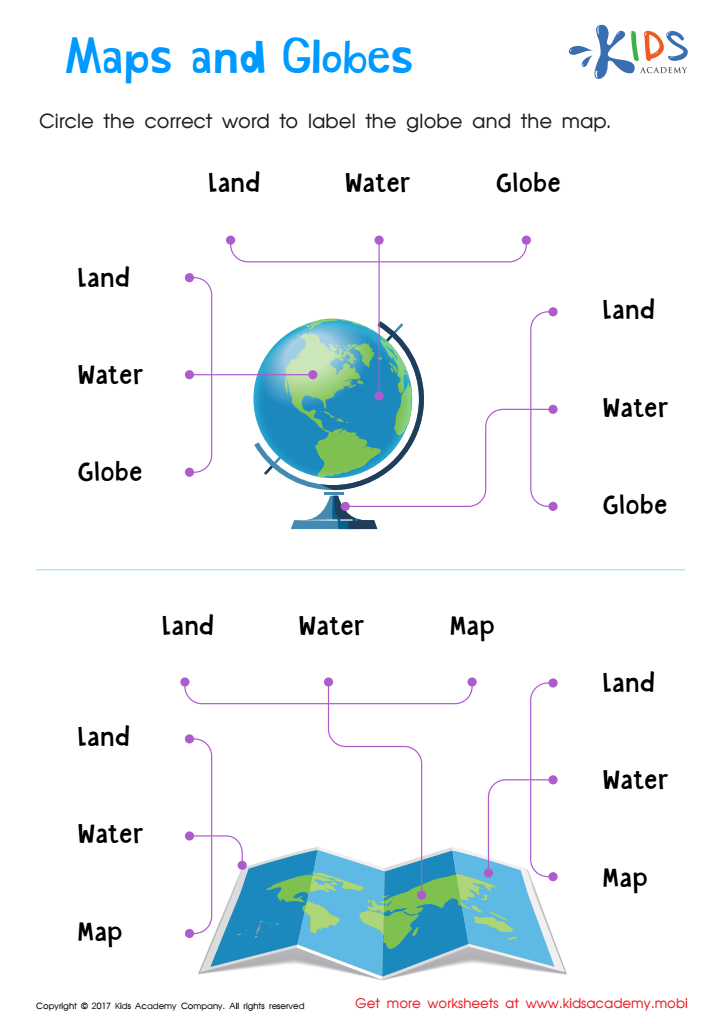Map reading Normal Worksheets for Ages 3-9
3 filtered results
-
From - To
Discover our engaging Map Reading Normal Worksheets designed specifically for children ages 3-9. These interactive resources help young learners develop essential map reading skills through fun activities and visually appealing illustrations. Our worksheets cover various concepts, including understanding symbols, following directions, and recognizing landmarks, all tailored to suit the developmental needs of early learners. Perfect for at-home learning or classroom use, these worksheets encourage spatial awareness and critical thinking in a playful way. Dive into the wonderful world of maps with your child and help them build confidence in navigating their surroundings through our carefully crafted educational materials!


World Maps Worksheet


Intercardinal Directions Worksheet
Map reading is an essential skill for children ages 3-9, as it lays the foundation for spatial awareness and cognitive development. Understanding maps helps young learners develop critical thinking, problem-solving skills, and a sense of direction. By engaging with maps, children learn to interpret symbols, distances, and landmarks, which enhances their ability to comprehend diverse contexts in real life, from navigating their neighborhood to exploring new environments.
Moreover, map reading fosters an appreciation for geography and promotes observational skills. Teachers and parents can incorporate map activities into daily learning experiences, making lessons more interactive and engaging. This not only enriches children's vocabulary but also encourages teamwork and communication through collaborative map-related projects.
In today’s technologically advanced world, where GPS systems dominate navigation, the ability to read and understand traditional maps remains a vital skill. It instills confidence, independence, and a sense of adventure in children, empowering them to explore the world around them. Ultimately, when parents and teachers prioritize introducing children to map reading early on, they equip them with valuable skills for lifelong learning and exploration.

 Assign to My Students
Assign to My Students





%20(1).jpg)














